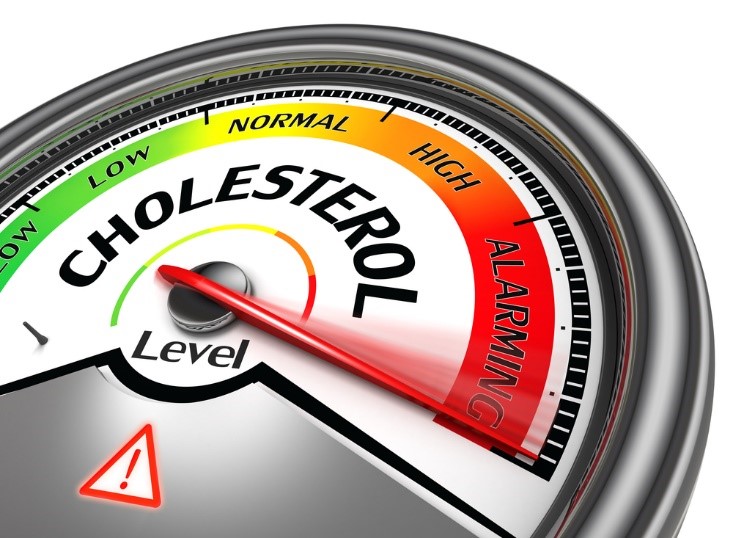What can raise your cholesterol?

We always tend to associate cholesterol with adverse health conditions. However, it’s imperative to understand is that our body does need some cholesterol to maintain the metabolism process efficiently. It facilitates the functioning of digestion and keeps the balance between hormones and other Vitamins that are necessary for the body. Excess of everything is bad, therefore, maintaining an optimum cholesterol level is of utmost importance. How to go about it? Performing a Cholesterol test at a regular interval of time is helpful in keeping the level check.
Types of Cholesterol
There are mainly two main types of cholesterol that are supported by different kinds of lipoproteins present in the body. Low-density lipoproteins (LDL) are known as “bad” cholesterols. This type of cholesterol (LDL cholesterol) can build up in the arteries and causes Coronary artery disease, Cardiac attack, Heart attack, Stroke, Cerebrovascular accident, etc.
High-density lipoproteins (HDL) are considered as a healthy cholesterol or an important component which is required by our body. HDL cholesterol, transports cholesterol from other parts of the body back to the liver. However, it’s important to have a proper balance between both the types of cholesterols.
Symptoms of Cholesterol
Cholesterol symptoms can be detected by performing a simple blood test. If you have cholesterol, it can only be ensured through a blood test. Patients primarily perform a periodic review and analyze their cholesterol level. It also depends upon the medical history of the family, let’s say if your parents or ancestors had the tendency towards high cholesterol then you are also at an increased risk of having Cholesterol.
Though high cholesterol level typically cause no visible symptoms. In case of emergencies, you might suffer a sudden heart attack or stroke. However, some of the most common symptoms of Cholesterol include –
- Chest Pain. It is caused when the arteries that supply blood to the heart get affected.
- lipid disorders.
- Bumps in the skin in the hands and feet, which is caused by deposition of extra fat or cholesterol and other types of fats.
Causes of Cholesterol
Here are the factors that may increase your risk of high cholesterol:
Poor diet – Eating saturated fat, found in animal products, and Trans fats, that are found in some commercially baked cookies and crackers, can raise your cholesterol level. High cholesterol foods such as red meat & full-fat dairy products, also increase your total cholesterol.
Obesity – A BMI of 30 or above can place you at risk of high cholesterol.
Large waist circumference – Women with a waist circumference of at least 35 inches (89 centimeters) or men with a waist circumference of at least 40 inches (102 cm) are at an increased risk of having cholesterol.
Lack of exercise – Exercise is good for health as it boosts your body’s HDL.
Smoking – Smoking cigarette damages your blood vessel’s walls. This may result in fat deposition in the blood vessels. It may also lower your level of HDL, or “good,” cholesterol.
Diabetes – High level of diabetes results in higher LDL cholesterol & lower HDL cholesterol. It also destroys the lining of the arteries.
What does a Cholesterol Test involve?
A cholesterol test measures four types of lipids, or fats, present in your blood:
Total cholesterol test – This is the total amount of cholesterol present in the blood stream.
Low-density lipoprotein (LDL) cholesterol test – This is recommended as “bad” cholesterol by the doctors and researchers. As LDL increases the risk of suffering from a heart attack at a very early age. It further raises the risk of having a stroke and atherosclerosis.
High-density lipoprotein (HDL) cholesterol test – This is considered as “good” cholesterol component because it helps in removing LDL cholesterol from your blood.
Triglycerides test – All those individuals who are overweight, diabetic, eat too many sweets, drink too much alcohol or consume more sugar content on a regular basis have high triglyceride levels in the body.
Cholesterol Test Procedure
A complete cholesterol test procedure is also known as a lipid profile or lipid panel. A doctor can use the cholesterol test procedure to measure the amount of bad and good cholesterol and especially triglycerides, a type of fat, present in your blood. Cholesterol is considered as a soft, waxy, fat component that the body needs in order to function properly. However, too much cholesterol is harmful and can lead to various dangerous diseases such as:
- Coronary artery disease, cardiac arrest, heart attack, etc.
- Stroke, cerebrovascular accident, speech difficulties, etc.
- Atherosclerosis, plague build- up in artery wall or stiffness of arteries
A doctor may ask to fast before having your cholesterol test procedure.
The doctor needs to be well informed about the health problems you’re experiencing, the family history of heart health, all medications and supplements which you have taken, before conducting the test.
Who should perform a cholesterol test?
For males, it’s recommended getting the cholesterol levels checked regularly, starting by age 30. For females, it is recommended to conduct a cholesterol test procedure by 40 or younger.
It is also suggested to get the cholesterol level checked in every five years. If you’ve been diagnosed with stroke, diabetes, heart, disease or high blood pressure, or taking medication to control the cholesterol levels, then getting a cholesterol test done every year is a must!
Cholesterol Ranges
Cholesterol range varies depending upon the age, weight, gender and especially the type of regular diet which you are taking.
The body tends to produce cholesterol as per the way you are handling your lifestyle.
For e.g., Even if a person is taking a heavy diet as well as following sports activity and yoga exercises in his daily life, then he would have less cholesterol in his body as compared to those who are in taking oily food, and they are not following any such physical activity or exercises.
Cholesterol range is primarily measured in three categories:
- Total cholesterol.
- Low-density lipoprotein (LDL).
- High-density lipoprotein (HDL)
One of the major concerns of most of the people is balancing the cholesterol range.Total and LDL cholesterol levels should always be kept low, whereas, the presence of more HDL cholesterol in the blood ensures some protection against developing heart-related diseases including heart attacks and strokes.
Cholesterol Range for Adults
Total cholesterol range less than 200 milligrams per deciliter (mg/dL) are considered as desirable for adults. Cholesterol range between 200 and 239 mg/dL is considered as a borderline, and a reading of 240 mg/dL and above is considered as high cholesterol.
The normal LDL cholesterol level should be below 100 mg/dL. 100 to 129 mg/dL is adequate for those who don’t have any medical issues. Range of 130 to 159 mg/dL is borderline and 160 to 189 mg/dL is quite high.
HDL levels should be kept higher. The reading should range from 41 mg/dL to 59 mg/dL. The optimal value for HDL level is 60 mg/dL or higher.
Cholesterol Range for Children
In comparison to the above-mentioned ranges for adults, the adequate level of total cholesterol and LDL cholesterol in children are very different.
The total cholesterol level for a child should be less than 170 mg/dL. Borderline high total cholesterol for a child should range from 170 to 199 mg/dL.
A child’s LDL cholesterol range should also be lower than an adult’s. The required LDL cholesterol level for a child is less than 110 mg/dL. Borderline high is from 110 to 129 mg/dL, and if it’s above 130 mg/dL, then it means it’s too high.
Conclusion
It is crucial to keep a proper check on the cholesterol levels of the body. Avoid factors which can increase the level in your body. Immediately consult a doctor if you are unable to manage your cholesterol level!












